Delivering a successful project requires careful coordination, resource allocation, and informed decision-making. The project management triangle — often called the triple constraint or iron triangle — provides a framework for understanding how time, cost, and scope influence each other and affect overall outcomes.
This guide explores the core elements of the project triangle, its applications, and strategies for keeping projects aligned with objectives. Tools like monday work management provide practical solutions for managing these constraints, helping teams deliver consistent results.
What is the project management triangle?
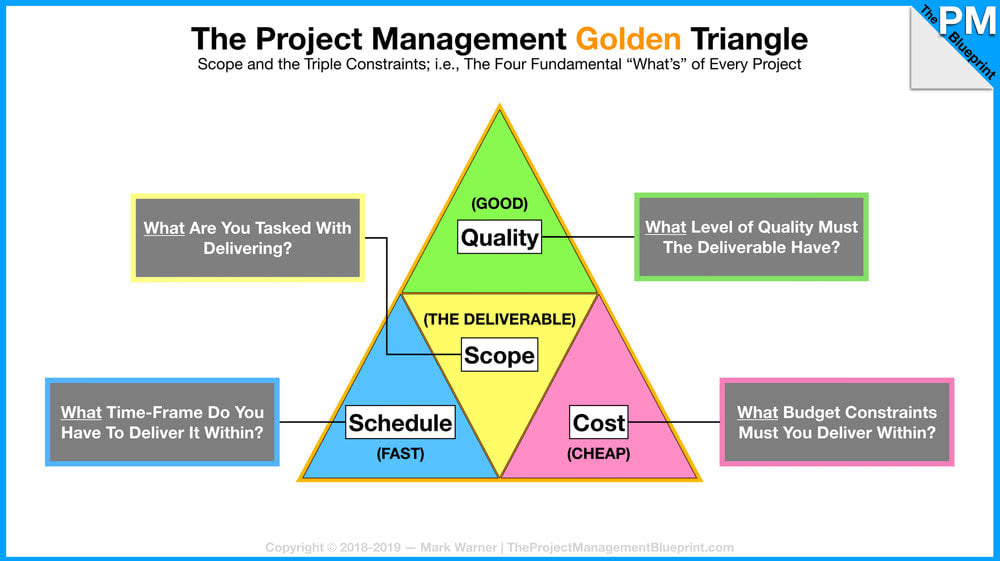
The project management triangle, also known as the triple constraint model or iron triangle, serves as a foundational framework for balancing the primary constraints in project management: time, cost, and scope. These factors create the boundaries within which all project work takes place.
Understanding how adjustments to one factor ripple through the others helps project managers align project objectives with organizational goals. For example, increasing scope often requires additional time or resources, which may impact the project budget. By visualizing these relationships, teams can navigate trade-offs, address risks, and keep their project schedule and quality on track.
How does the project management triangle work?
The project management triangle demonstrates the interconnected nature of time, cost, and scope and their influence on the project plan:
- Time constraint: Refers to the project schedule, including milestones and deadlines. Compressing the time frame to meet tighter deadlines may require allocating additional budget or limiting the scope to maintain progress across the entire project.
- Cost constraint: Includes the project budget, covering actual costs such as salaries, tools, materials, and other resources. If unexpected expenses arise, extending the timeline or adjusting deliverables can prevent the budget from being exceeded.
- Scope constraint: Defines the deliverables and objectives of the current project. Expanding the scope, such as incorporating new features or tasks, typically increases time requirements and actual costs.
Balancing these constraints enables project teams to align with organizational goals and keep the project on track. For instance, when adjusting a project plan to account for resource shortages, project managers might extend the schedule and request an additional budget to maintain the scope. Using visual timelines and collaborative tools, teams can better navigate these trade-offs and achieve successful outcomes.
What is the project management triangle used for?
The project triangle is a foundational tool for maintaining balance among the constraints of project management. It helps project teams identify trade-offs, set priorities, and make decisions that align with both the project plan and organizational goals.
Visualizing the relationships between time, cost, and scope allows project managers to keep the entire project on track, allocate resources effectively, and manage risks proactively.
Project management tools support these efforts through features such as visual timelines, collaborative dashboards, and real-time tracking. These capabilities help project teams adapt to changes, monitor actual costs, and adjust schedules as needed to achieve success.
Are there other constraints in a project?
In addition to time, cost, and scope, other factors can significantly influence the outcomes of any type of project:
- Quality: Measures how well the deliverables meet stakeholder expectations. Reducing the actual cost or limiting the budget can impact quality by cutting back on testing or using lower-grade materials.
- Benefits: Reflect the value delivered to stakeholders or customers. Even a project completed on time may fail to meet its objectives if the final product does not fulfill customer needs.
- Risk: Accounts for uncertainties that could disrupt the project plan. For instance, relying on a single supplier for critical components introduces risk if delays occur.
Addressing these additional constraints requires thorough planning and effective tools. monday work management offers solutions that allow teams to identify potential issues, track progress, and create a balanced approach to managing quality, benefits, and other constraints within the framework of the project triangle.
Understanding the relationships between constraints
Time, cost, and scope are closely linked through proportional and inverse relationships:
- Proportional relationship: Expanding scope generally requires additional time and budget. For instance, increasing the complexity of a software feature requires extended development timelines and more resources, impacting overall project costs.
- Inverse relationship: Reducing timelines often leads to increased costs as more resources are allocated to meet deadlines. Conversely, cutting budgets might slow progress by reducing available resources, potentially delaying the project schedule.
Understanding these dynamics allows project managers to create actionable plans that address challenges effectively. Using project management software like monday work management enables teams to track progress, identify risks, and adjust strategies to maintain balance and achieve project objectives.
What is the Agile triangle?
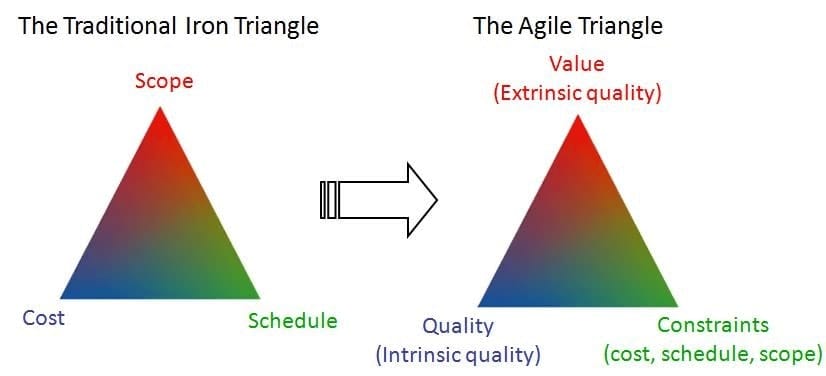
The Agile triangle builds on the traditional project triangle by prioritizing value and quality alongside the project constraints of time, cost, and scope. While the traditional model emphasizes managing constraints first, the Agile approach shifts the focus toward achieving meaningful outcomes.
- Value: Concentrates on delivering results that meet customer needs and align with project objectives. It ensures projects provide tangible benefits for both end users and project teams.
- Quality: Focuses on developing products or deliverables that adhere to high standards, incorporating features and innovations that exceed expectations.
- Constraints: Recognizes the interconnected nature of time, cost, and scope but adapts these elements to align with value and quality priorities.
The Agile triangle encourages a mindset that balances flexibility with impact, offering teams the ability to adapt to constraints without compromising on the overall goal.
Strategies for managing the project management triangle
Effectively managing the project triangle involves careful planning, informed decision-making, and adaptability to changing conditions. Here are strategies to balance the constraints of project management:
- Define a detailed scope statement: Establish clear project objectives, specifying what is and isn’t included. Align all stakeholders to prevent misunderstandings about deliverables.
- Create a realistic schedule: Break the project into phases with achievable milestones to maintain alignment with the project schedule. Reassess timelines when priorities shift to prevent delays.
- Allocate resources strategically: Develop a budget plan that considers both fixed and variable costs. Include contingency plans for unexpected expenses to maintain alignment with project objectives.
- Monitor progress consistently: Use project management tools to track actual progress, identify bottlenecks, and address potential risks before they impact timelines.
- Encourage collaboration across teams: Maintain clear communication between departments to align on priorities and reduce silos. Shared dashboards and messaging tools facilitate real-time updates.
- Develop risk management processes: Anticipate challenges and prepare contingency plans. For example, evaluate risks in supply chain dependencies or resource allocation to mitigate disruptions.
- Implement structured change management protocols: Use established workflows to approve or reject changes to scope, costs, or timelines. This approach supports alignment without causing unnecessary delays.
Using these strategies, supported by tools like monday work management, project teams can balance constraints, adapt to challenges, and deliver results aligned with organizational goals.
Adjusting the triangle to your project needs
The project triangle is adaptable, allowing project teams to align it with their chosen methodologies and specific requirements:
- Agile teams: Focus on delivering value and maintaining quality, treating cost and time constraints as flexible elements to accommodate changing objectives.
- Waterfall methodologies: Emphasize sequential completion of each project phase, treating scope as the fixed constraint and adjusting time and cost as needed to achieve deliverables.
Efficiency and resource management play pivotal roles in maintaining balance within the triangle. For example, automating workflows or implementing resource planners helps project owners allocate resources effectively.
Project management tools provide visibility into project progress and risks, enabling teams to make timely adjustments and meet deadlines while maintaining focus on project goals.
How monday work management powers strategic execution across your organization
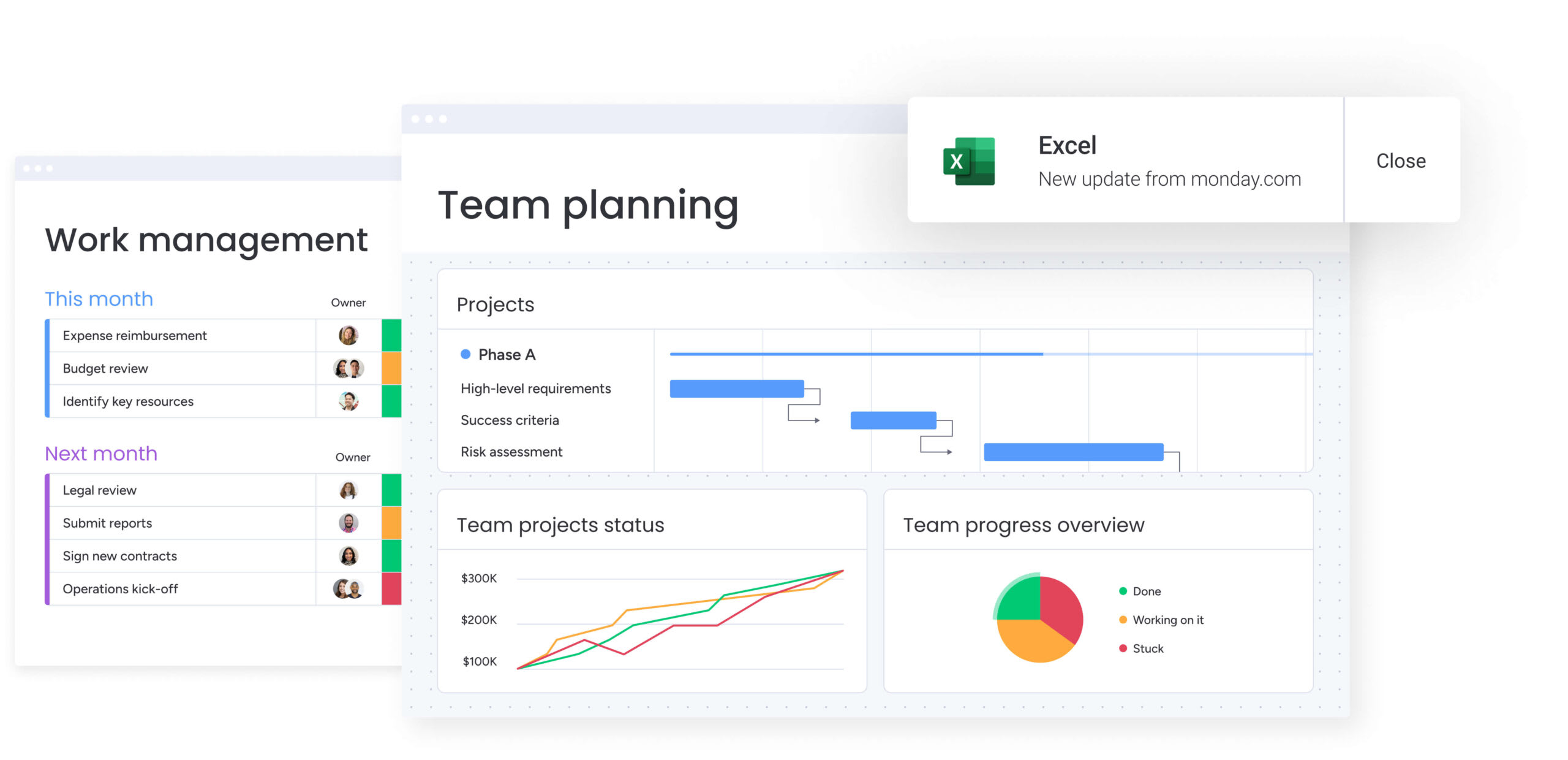
monday work management provides advanced features that address the challenges of managing constraints in project management, offering a solid foundation for achieving project goals, and strategically executing your projects across diverse industries and team structures.
- Resource optimization: Tools like workload widgets and resource planners allow project owners to align individual tasks with the overall action plan, avoiding resource inefficiencies. These features help teams manage variable costs effectively and prevent delays in any project phase.
- Leadership visibility: Real-time dashboards provide project owners and leadership teams with updates on the relationship between scope, time frames, and actual progress. These insights enable quick decision-making to keep projects on track while addressing risks proactively.
- Scalability: monday work management integrates with enterprise systems, adapting to different types of projects and supporting growth. This scalability enables organizations to manage large-scale initiatives while maintaining oversight and alignment with strategic objectives.
These capabilities equip project teams to navigate project constraints while delivering measurable results. With tools that monitor progress, manage risks, and adapt workflows, monday work management supports teams in achieving their goals across every project phase.
Let’s break down its key features and how they help address the challenges of modern project management:
Customizable templates for streamlined workflows
Templates help project owners create workflows aligned with specific project goals. These tools simplify planning and execution across individual tasks and teams, promoting clarity and accountability in every project phase. Standardized processes reduce ambiguity, allowing teams to progress efficiently while meeting quality expectations.
Real-time visibility and control across projects
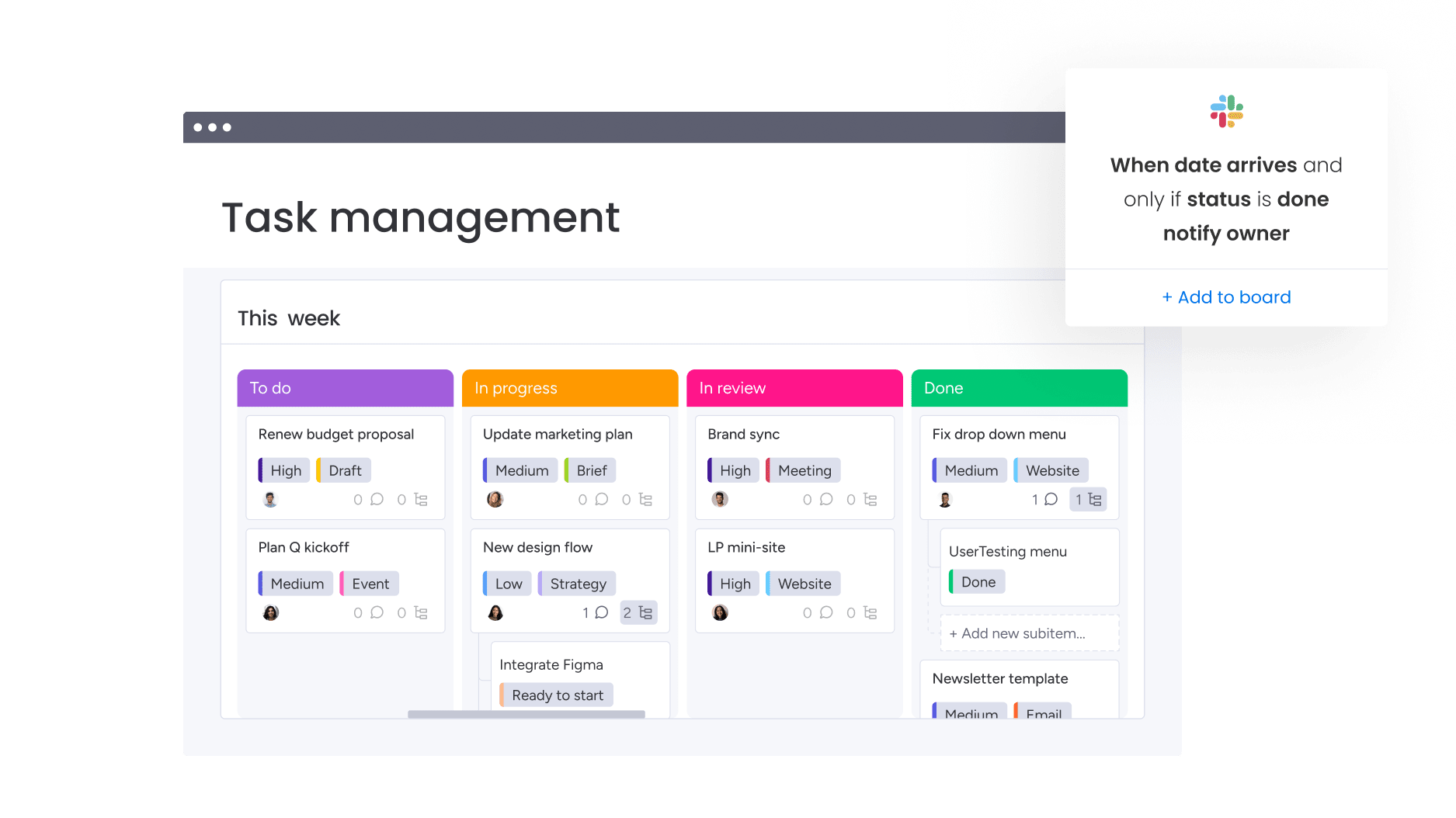
Dashboards and tools like Gantt charts give project teams the ability to track actual progress against established plans. These tools identify potential risks and highlight changes in scope, cost, or timelines. Project owners can analyze updates in real time, keeping the project schedule aligned with the defined action plan while addressing challenges effectively.
Collaborative tools for cross-functional teamwork
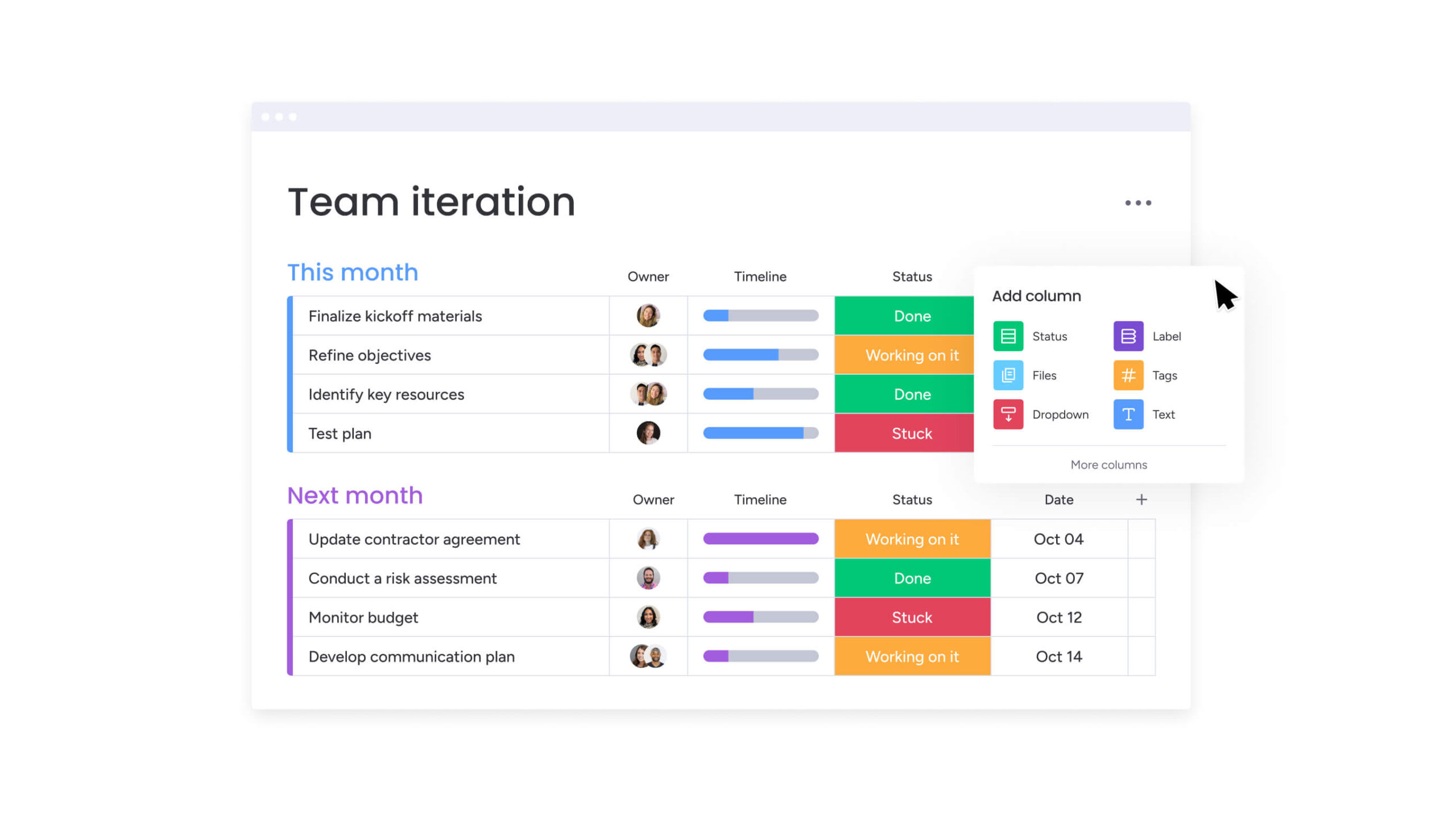
Shared workspaces unite teams to manage tasks, share updates, and communicate efficiently. Reducing silos ensures alignment across departments and project phases. Teams benefit from real-time updates that keep projects on track and eliminate delays caused by miscommunication.
Automations and AI to increase productivity
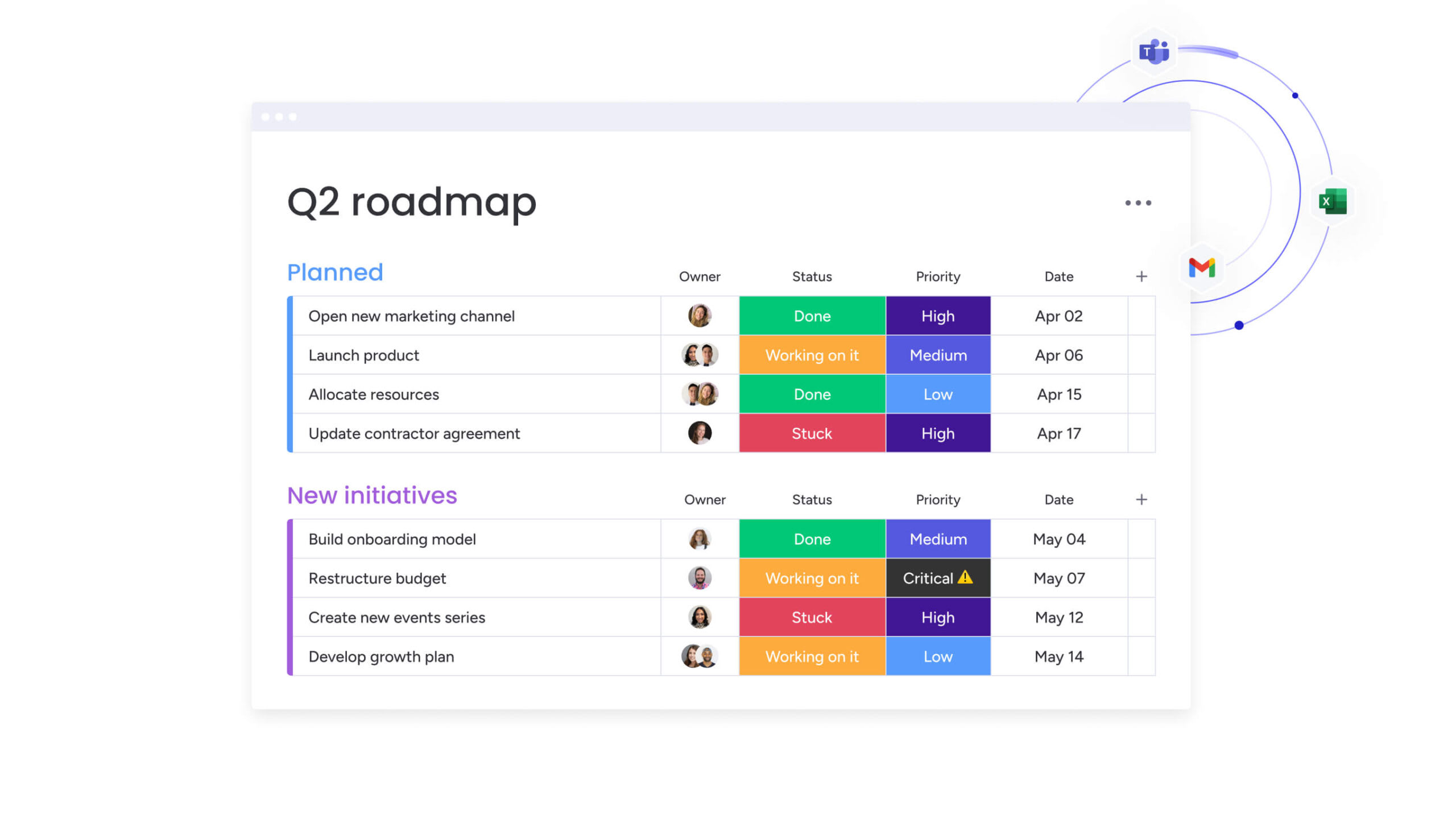
Automations reduce manual tasks, allowing project teams to focus on high-priority objectives. AI-powered features help identify risks, refine plans, and improve resource allocation. These capabilities minimize variable costs and support timely adjustments, helping projects remain aligned with overall objectives without unnecessary delays.
Enterprise-grade security and governance
Advanced security features protect data while adhering to industry standards like SOC2 and GDPR. Role-based access controls enable secure collaboration among project teams, helping organizations manage large-scale projects without compromising compliance or progress.
Improve your project management with monday work management
monday work management gives organizations the tools they need to navigate project constraints and achieve their goals. From building clear project plans to managing actual costs and visual timelines, the platform empowers teams to stay aligned, adapt to changes, and deliver results across every phase of the project.
Designed for enterprise-scale challenges, monday.com brings clarity and control to complex projects. Real-time tracking, collaborative tools, and resource management features help project teams make informed decisions and keep the entire project moving forward. With monday work management, you can confidently turn strategies into action and consistently deliver high-quality outcomes.
FAQs
Why is the project management triangle important?
The project management triangle provides a clear framework for balancing constraints like time, cost, and scope. This helps project owners make decisions that align with goals, prevent delays, and manage budgets effectively while keeping projects on track.
What are the phases of the project management lifecycle?
The lifecycle includes four phases: initiating, planning, executing, and closing. Each phase supports clear objectives, from defining the project scope to managing individual tasks and reviewing progress. A structured approach ensures every phase contributes to project success.
What causes scope creep in project management?
Scope creep occurs when unplanned changes are introduced to a project without adjusting resources, timelines, or budgets. This often results from unclear objectives or unmanaged changes. Clear planning and robust project tools help avoid these issues and maintain alignment.
What’s the relationship between the project management triangle and project quality?
The project triangle’s constraints—time, cost, and scope—directly influence quality. Adjusting one factor, like reducing the budget, can affect timelines or deliverables. Carefully managing these trade-offs ensures projects maintain their standards without exceeding resources.
What’s the difference between scope creep and scope change?
Scope creep refers to unplanned additions that disrupt progress, while scope change involves deliberate adjustments approved through formal processes. Scope changes are controlled and planned, ensuring they align with project goals and do not negatively impact outcomes.
What’s the relationship between the project management triangle and project quality?
The project management triangle has a direct impact on project quality by balancing time, cost, and scope. When one constraint is compromised, such as a reduced budget or a shortened timeline, it often affects the quality of the deliverables. Adjusting the triangle’s constraints carefully ensures that resources are used effectively, stakeholder expectations are met, and quality is maintained.
Can the project management triangle apply to Agile projects?
The project management triangle adapts well to Agile methods. In Agile projects, time and cost often serve as flexible constraints, allowing teams to adjust scope iteratively while focusing on quality. This approach supports dynamic objectives without compromising deliverables.
How does monday work management support project success?
monday work management provides tools to address constraints in project management, including customizable workflows, dashboards for tracking progress, and AI features for managing risks. These tools enable project teams to stay aligned with objectives and manage changes effectively.
 Get started
Get started 
